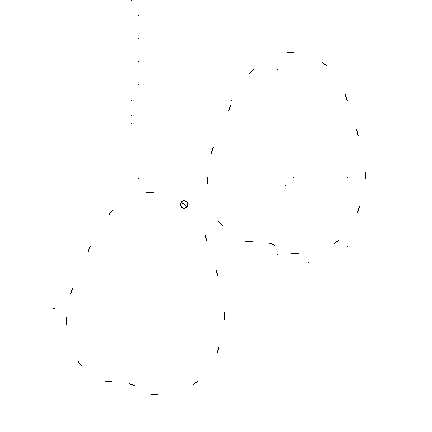
Saliency plots for the two-pear example with directed edges. As mentioned before directed edges are used to impose smoothness of contours at the edges. The length of each edge is proportional to its saliency.

Saliency plots for the two-pear example with undirected edges. The measure completely misses the contours bounding the two pears.